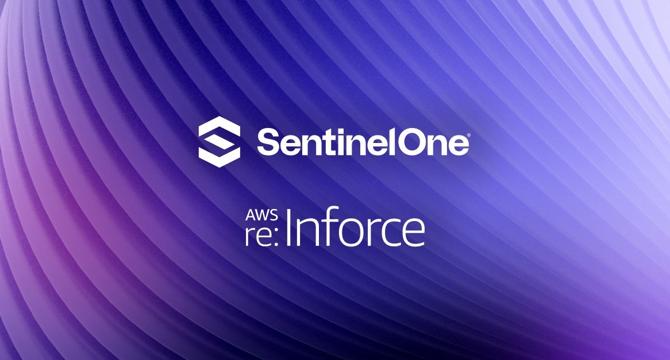Cloud News
Dev
216

Image Credit: Dev
🔍 Amazon ECR Now Shows You Where Your Images Are Actually Used — Game Changer for Container Security!
- Amazon ECR (Elastic Container Registry) introduces Enhanced Scanning feature, providing usage insights for container images in ECS or EKS clusters.
- Enhanced feature displays last used date, number of clusters using images, and Cluster ARNs where images are deployed.
- Previously, ECR allowed scanning for vulnerabilities using Amazon Inspector without usage insights.
- The update, effective June 2025, enables users to identify actively used images and prioritize security efforts accordingly.
- For example, users can pinpoint images like backend-service:latest used in multiple clusters and disregard unused images like legacy-app:v1.2.
- Benefits include focusing on vulnerabilities in actively-used images, cleaning up outdated images, and making efficient security decisions.
- Information is available in ECR Console for scan results and Amazon Inspector Console for findings, with API support for programmatic data retrieval.
- The update enhances visibility and efficiency, particularly beneficial for managing multiple microservices and deployments.
- This improvement streamlines security efforts by providing actionable insights and reducing unnecessary remediation tasks.
- The feature offers a clearer understanding of image usage, aiding in effective vulnerability management and resource optimization.
- Amazon ECR's Enhanced Scanning feature empowers users to make informed decisions in container security and resource management.
- The update enhances container security practices by highlighting actively-used images and facilitating efficient security actions.
- This development aids in optimizing resource allocation and prioritizing security efforts in containerized environments.
- With increased visibility into image usage, AWS aims to streamline security processes and promote effective resource utilization.
- The feature's capability to pinpoint actively used images supports users in focusing security efforts on critical areas for enhanced protection.
- This update represents a significant advancement in container security by providing transparency on image usage within ECS and EKS clusters.
Read Full Article
13 Likes
Siliconangle
1.5k

Image Credit: Siliconangle
AWS focuses on simplifying cloud security at re:Inforce 2025 conference
- AWS announced enhancements at its re:Inforce 2025 conference to simplify cloud security at enterprise scale.
- The focus is on simplifying security while helping organizations manage risk and respond to threats effectively.
- Key updates include a new version of AWS Security Hub that prioritizes critical security issues and aids in reducing security risks.
- The updated Security Hub correlates findings across various tools into one actionable feed, boosting incident response efficiency.
- AWS Shield now includes network posture management with automated discovery of resources and remediation steps integrated in the console.
- Amazon GuardDuty Extended Threat Detection extends coverage to containerized environments like EKS for improved threat detection.
- Additional updates include improvements to AWS WAF, Amazon CloudFront, IAM Access Analyzer, and mandatory multifactor authentication for root users.
- AWS Network Firewall now blocks indicators of compromise, and multiparty approvals for air-gapped vaults enhance backup resilience.
- Development security offerings were enhanced with Amazon Inspector becoming generally available for code scanning.
- AWS introduced Amazon Verified Permissions for Express.js developers to implement authorization in web application APIs more easily.
- The release of @verifiedpermissions/authorization-clients-js simplifies authorization implementation for Express.js developers.
Read Full Article
14 Likes
Tech Radar
233

Image Credit: Tech Radar
I don't like the idea of my conversations with Meta AI being public – here's how you can opt out
- Meta AI defaults to prompting users to post publicly in the app's Discovery feed, leading to inadvertent sharing.
- Despite a new warning pop-up, accidental sharing remains a risk on the Meta AI app.
- Users have the option to opt out of public conversations in the Meta AI app's settings.
- The Discovery feed feature allows users to showcase their interactions with the AI, but many were unaware of the public nature of their posts.
- Users realized that sharing prompts on the Discovery feed made their chats visible to everyone, akin to a public Facebook post.
- The Discovery feed displays a mix of AI-generated content, personal prompts, and intimate conversations, blurring the lines between AI and social media.
- To prevent accidental sharing, users can disable the Discovery feed feature in the app's settings.
- By following specific steps in the Meta AI app, users can restrict public visibility of their prompts to themselves only.
- Despite opting out of public sharing, Meta retains the right to leverage conversations for model improvements.
- Meta's approach highlights the tension between AI model performance and user privacy concerns.
Read Full Article
14 Likes
Dev
30

Image Credit: Dev
Solving the Serverless Paradox: How Hybrid Architectures and AI/ML Enhance Performance and Portability
- Serverless computing offers agility, scalability, and cost efficiency by abstracting infrastructure management but faces challenges like cold start latency and vendor lock-in.
- Hybrid architectures, combining serverless with traditional services, mitigate cold start latency by using each model for their strengths.
- AI/ML plays a proactive role in predicting demand, avoiding cold starts, and optimizing serverless resource allocation.
- Multi-cloud deployments and abstraction layers combat vendor lock-in, providing flexibility and portability in serverless architectures.
- The serverless landscape is evolving with AI/ML integration, hybrid approaches, and multi-cloud strategies, making it more resilient and performant.
- The future of serverless includes advancements in predictive scaling, seamless multi-cloud integration, and enhanced observability tools.
Read Full Article
1 Like
Discover more
- Programming News
- Software News
- Web Design
- Devops News
- Open Source News
- Databases
- Product Management News
- Operating Systems News
- Agile Methodology News
- Computer Engineering
- Startup News
- Cryptocurrency News
- Technology News
- Blockchain News
- Data Science News
- AR News
- Apple News
- Cyber Security News
- Leadership News
- Gaming News
- Automobiles News
Dev
307

Image Credit: Dev
Mastering DevSecOps and GitOps for Secure Cloud-Native Applications
- The article highlights the importance of integrating DevSecOps practices with GitOps in the cloud-native landscape for enhanced security.
- GitOps, with its focus on a declarative model within Git repositories, aligns naturally with DevSecOps goals of embedding security early in the SDLC.
- Key strengths of GitOps such as establishing a single source of truth, immutability, and continuous reconciliation are beneficial for security and compliance.
- Integration of DevSecOps practices like shift-left security, policy as code, secret management, and runtime security enhances the security posture of GitOps pipelines.
- Challenges in adoption include cultural shifts, managing complexity, tooling integration, and the need for continuous training and awareness programs.
- Addressing these challenges can lead to a more resilient and secure GitOps pipeline, improving the efficiency of software delivery.
Read Full Article
18 Likes
Dev
82

Image Credit: Dev
Security in Voice AI: Safeguarding Cloned Voice Data and APIs with AWS Best Practices
- Voice AI security is crucial to prevent leaks of customer audio data and ensure compliance.
- Securing voice cloning infrastructure on AWS is essential to prevent unauthorized access.
- IAM policies should follow least privilege principles and avoid wildcard permissions.
- Custom inline policies should be used to tightly restrict actions.
- Network security best practices include keeping inference engines in private subnets.
- Data protection involves encrypting data at rest and in transit using best practices like TLS 1.2+.
- Logging and monitoring with CloudWatch, CloudTrail, GuardDuty, and Security Hub are crucial.
- API security measures like IAM auth and WAF rules help protect endpoints.
- Isolation by design is important, especially for multi-tenant environments.
- Compliance with regulations like HIPAA and SOC 2 is supported through encryption and access controls.
- A final security checklist ensures IAM roles, S3 buckets, API Gateway, compute resources, Secrets, monitoring, and compliance are all secured.
- Voice AI security is mandatory for maintaining data privacy and compliance.
- A well-secured voice cloning platform on AWS ensures data protection and regulatory compliance.
- Proper security measures help in maintaining a scalable and cost-effective voice cloning platform on AWS.
Read Full Article
4 Likes
Siliconangle
56

Image Credit: Siliconangle
VCF 9 goes live: Recapping the execution roadmap for Broadcom’s AI and cloud infrastructure vision
- Broadcom launches VMware Cloud Foundation 9, emphasizing hybrid cloud infrastructure.
- VCF 9 aligns with Broadcom's vision for enterprise cloud computing, focusing on AI, cyber resilience, and operational efficiency.
- Christophe Bertrand highlights the importance of investing in secure and efficient infrastructure for AI.
- He emphasizes the need for scalability, security, and operational simplicity in the cloud.
- At the 'Broadcom Delivers the Modern Private Cloud' event, analysts discuss the implications of VCF 9 for the market.
- Data sovereignty and AI scalability are crucial aspects addressed by VCF 9.
- Localized data handling, compliance, and control are key factors for enterprises.
- VCF aims to offer cloud infrastructure capable of handling AI workloads locally.
- VCF provides a hybrid, multi-cloud solution while avoiding the 'Amazon tax' for SaaS companies.
- Cybersecurity is foundational in VCF 9, integrating tools for resilience and protection against AI-driven cyberattacks.
- Broadcom's strategic reset through VCF 9 involves partnerships like Nvidia Corp. to enhance scalability and power.
- The modern private cloud approach of VCF gives enterprises control over costs and deployments.
- VCF 9 integrates features like live recovery tools and microsegmentation to enhance cybersecurity.
- AI momentum is expected to provide a significant boost to VMware's position in the market.
- VCF 9 addresses the increasing demand for secure and efficient cloud infrastructure in the era of AI.
- The exclusive coverage of the Broadcom event by theCUBE explores the impact of VCF 9 on customers and infrastructure.
Read Full Article
3 Likes
Siliconangle
225

Image Credit: Siliconangle
VCF 9 goes all in: Broadcom rewires the private cloud playbook
- Broadcom Inc. and VMware have launched VMware Cloud Foundation 9, redefining the private cloud landscape with enhanced agility, AI-readiness, and streamlined operations to meet modern enterprise demands.
- VCF 9 simplifies complexity and unifies cloud operations across environments, offering a full-stack infrastructure covering compute, storage, networking, and automation for seamless deployment on-premises or in the public cloud.
- The release aims to support traditional workloads and next-gen applications, providing a foundation for AI, containers, and modern DevOps practices.
- Paul Turner, from Broadcom, emphasizes VCF 9's deep integration work catering to developers and administrators, delivering a consistent cloud operating model.
- VCF 9 integrates compute, storage, networking, and automation, allowing for cloud deployment according to user preferences, whether on-premises or in the public cloud.
- The platform includes central fleet management, aiding administrators in reducing complexity, managing updates, scaling operations, and enforcing governance and security.
- VCF 9 focuses on empowering developers with on-demand services, unified interfaces, support for modern app pipelines, and integrated Kubernetes to support AI applications.
- The release streamlines fleet management, config management, and certificate monitoring to ensure compliance across infrastructures.
- VCF 9 is positioned as essential for the next wave of generation AI applications by offering container-based services, Kubernetes integration, and necessary tooling out of the box.
- The collaboration between Broadcom and VMware has resulted in a powerful, unified platform with deep integration, scalability, AI capabilities, developer readiness, and cost efficiency.
Read Full Article
13 Likes
Dev
285

Image Credit: Dev
Adopting Cloud-Native Architectures: A Guide for Mid-Sized Fintech Firms
- Cloud-native architectures are crucial for the success of modern fintech firms, with many mid-sized companies opting for cloud migration strategies to enhance speed, scalability, and compliance.
- Adopting cloud native software architectures has proven beneficial for fintech companies, enabling them to outperform peers tied to legacy infrastructure, according to experts from Gartner, McKinsey, and KPMG.
- Fintech firms can utilize AWS services to initiate cloud migration strategies, allowing them to develop highly secure and scalable systems efficiently.
- Start small with a hybrid cloud migration model, leveraging Amazon ECS or EKS for containerization, and AWS API Gateway for secure service access.
- Transition towards an event-driven architecture for increased agility and scalability, utilizing AWS EventBridge and Amazon Kinesis for asynchronous workflows.
- Implement a data placement strategy focusing on operational data, analytics, and compliance using services like Amazon RDS, Aurora, S3, Athena, Redshift, and SageMaker.
- Integrate security and compliance features into the architecture using AWS tools such as IAM, KMS, Config, and CloudTrail to enforce access control and data encryption.
- Control cloud costs effectively with AWS tools like Cost Explorer, AWS Budgets, auto-scaling, and Kubecost for Kubernetes workloads.
- Cloud-native software development offers flexibility and speed for the future of fintech, with AWS supporting the journey towards building scalable, secure, and future-ready platforms for mid-sized firms.
Read Full Article
17 Likes
Dev
64

Image Credit: Dev
How to Use Azure DevOps MCP Server with GitHub Copilot in VS Code: Complete Setup Guide
- Microsoft released an official Model Context Protocol (MCP) server that integrates Azure DevOps with GitHub Copilot in VS Code.
- To set up, authenticate with Azure using the Azure CLI, create an MCP configuration file, and start the MCP server in VS Code.
- Enable GitHub Copilot Agent Mode to interact directly with Azure DevOps through Copilot for tasks like managing work items, projects, repositories, builds, and tests.
- Benefits include reduced context switching, natural conversations with project data, intelligent task updates, and rich context understanding.
- The Azure DevOps MCP integration streamlines development workflows, allowing interactions with development tools via natural language.
- Troubleshooting tips for common issues like server not starting, permission problems, and connection issues are provided.
- The future of AI-powered development is envisioned through the MCP integration, enabling a unified experience with natural language as the interface.
- The open-source Azure DevOps MCP server is available on GitHub, offering improved productivity and streamlined tool navigation in the development process.
- Users are encouraged to share their experiences with integrating MCP servers and suggest other tools for MCP support.
- The setup process for the Azure DevOps MCP server is quick, leading to long-term productivity gains and increased problem-solving time.
Read Full Article
3 Likes
Sysdig
80

Falco is now available as an Amazon EKS add-on
- Falco, the CNCF graduated runtime security project, is now available as an AWS-validated Amazon EKS add-on, making runtime security more accessible for EKS users.
- Falco monitors system calls at the kernel level, offering deep visibility into container and host activities, crucial for detecting zero-day exploits and insider threats.
- Key benefits of the Falco EKS add-on include simplified deployment and management, seamless integration with AWS services, automated lifecycle management, and consistent deployment across clusters.
- Users can install the Falco EKS add-on easily, integrating it with CloudWatch, CloudTrail, and securing AWS access via IAM Roles for Service Accounts (IRSA).
- By leveraging default rules, users can quickly start with Falco, while also having the ability to customize rules using ConfigMaps for specific security requirements.
- Troubleshooting steps and best practices are provided to ensure smooth operation and effective monitoring of security events triggered by Falco rules.
- AWS users are advised to stay updated on Falco add-on versions and can contribute to the open-source project through the Falco community for continuous enhancement.
- Overall, Falco's availability as an EKS add-on simplifies enterprise-grade threat detection for Amazon EKS workloads, enhancing security and compliance measures.
- The Falco add-on provides a comprehensive set of rules for detecting various security threats within containers, ensuring robust protection against malicious activities.
- Installing the Falco add-on on EKS clusters involves simple commands through AWS CLI, eksctl, or AWS console, streamlining the deployment process for users.
- Falco users can tune rules, set up alerting for critical events, review best practices, and troubleshoot issues effectively to maintain optimal security posture in EKS environments.
Read Full Article
4 Likes
AWS Blogs
203

Image Credit: AWS Blogs
AWS re:Inforce roundup 2025: top announcements
- AWS re:Inforce 2025 featured new security innovations and capabilities announced by AWS Vice President and Chief Information Security Officer Amy Herzog.
- A new IAM Access Analyzer capability helps verify internal access to critical AWS resources like S3 buckets, DynamoDB tables, and RDS snapshots.
- AWS now enforces Multi-Factor Authentication (MFA) for root users across all account types to prevent password-related attacks.
- Amazon threat intelligence on AWS Network Firewall offers protection against active threats relevant to workloads in AWS.
- AWS Certificate Manager now allows the issuance of exportable public SSL/TLS certificates for secure traffic termination.
- The new AWS WAF console simplifies security configuration steps by providing pre-configured protection packs for specific application types.
- Amazon CloudFront introduces a user-friendly interface to simplify web application delivery and security configuration.
- AWS Shield features Shield network security posture management for discovering and analyzing network security issues.
- AWS Security Hub enhances risk prioritization and response at scale to transform security signals into actionable insights.
- Amazon GuardDuty Extended Threat Detection now supports Amazon EKS clusters, improving detection of multistage attacks.
- The AWS MSSP Competency introduces new categories for partners providing security services, covering various security domains.
- Amazon Verified Permissions offers an open-source toolkit for securing Express application APIs in minutes.
- Amazon Inspector code security capabilities help identify security vulnerabilities across application source code, dependencies, and infrastructure.
- AWS Backup adds Multi-party approval for logically air-gapped vaults to enhance data recovery even in compromised account scenarios.
Read Full Article
12 Likes
Guardian
364
Image Credit: Guardian
How AI pales in the face of human intelligence and ingenuity | Letters
- Gary Marcus highlights that scaling up compute size alone won't solve AI problems due to the lack of embodied intelligence.
- Human intelligence benefits from being embodied and interacting with the world using senses, allowing for efficient learning and understanding.
- Humans can generalize truths from a few instances, a feat beyond current AI capabilities.
- The embodied nature of human intelligence makes it energy-efficient compared to AI systems.
- Energy demands of AI may raise concerns in the context of climate emergency.
- Apple researchers found limitations in cutting-edge AI models indicating a lack of reasoning capabilities.
- Current AI models rely on brute force and logic routines rather than true reasoning abilities.
- The term ANI (artificial narrow intelligence) better describes AI systems like ChatGPT, which excel at processing information but lack true reasoning.
- Repetition and model training can improve AI responses, but it does not equate to reasoning.
Read Full Article
21 Likes
Sentinelone
216

Image Credit: Sentinelone
Inside the SentinelOne + AWS Partnership: Smarter Cloud Security at re:Inforce 2025
- AWS re:Inforce is a key event for cloud security leaders where SentinelOne is a sponsor, showcasing a strategic partnership.
- The collaboration focuses on securing cloud assets with integrations across over 20 key AWS services, simplifying operations and boosting threat detection.
- AWS Security Hub's evolution enhances threat detection and data correlation, with SentinelOne integrating Hub data into its Singularity Platform for AI-powered security operations.
- SentinelOne offers solutions in the AWS Marketplace for unified visibility and autonomous response capabilities.
- SentinelOne is verified as a 'Deployed on AWS' solution, integrating seamlessly with AWS services and streamlining purchasing and deployment processes.
- The company joins the AWS ISV Workload Migration Program to ensure secure and speedy migrations to AWS.
- The partnership with AWS is grounded in shared values of security, automation, and AI in security, with a focus on continuous innovation.
- Joint efforts aim to make top-notch security a core part of the AWS experience, enabling organizations to innovate confidently.
- Shared commitment to delivering autonomous security and leveraging AI to tackle complex security challenges.
- Ongoing collaboration will deepen, emphasizing the future of AI-driven security in the cloud.
- Disclaimer: Any third-party product names, logos, and brands mentioned are owned by their respective owners and are for identification purposes only.
Read Full Article
13 Likes
AWS Blogs
416

Image Credit: AWS Blogs
Amazon GuardDuty expands Extended Threat Detection coverage to Amazon EKS clusters
- Amazon GuardDuty Extended Threat Detection expands coverage for Amazon EKS clusters to detect sophisticated multistage attacks targeting containerized applications.
- It introduces a new critical severity finding type that correlates security signals across Amazon EKS audit logs, runtime behaviors, malware execution, and AWS API activity.
- GuardDuty detects attack sequences exploiting container applications, obtaining privileged service account tokens, and accessing sensitive Kubernetes secrets or AWS resources.
- It provides comprehensive details on potentially impacted resources, timeline of events, actors involved, and indicators used for detection.
- EKS Protection and Runtime Monitoring are recommended for enhanced detection capabilities by monitoring control plane activities and behaviors within containers.
- Users can enable EKS Protection and Runtime Monitoring in the GuardDuty console to start monitoring EKS audit logs and observe complex attack patterns.
- GuardDuty correlates signals into a timeline, maps behaviors to MITRE ATT&CK® tactics, and provides granular insight into attacker progression and impacted resources.
- The Resources section in GuardDuty details page offers visibility into the assets affected during an attack sequence, allowing users to prioritize remediation efforts efficiently.
- Amazon GuardDuty Extended Threat Detection for Amazon EKS clusters enhances security monitoring, providing a holistic view of security posture and assisting in prioritizing threats.
- To utilize this extensive coverage, users can enable EKS Protection and consider adding Runtime Monitoring while referring to Amazon GuardDuty Documentation for more details.
Read Full Article
25 Likes
For uninterrupted reading, download the app